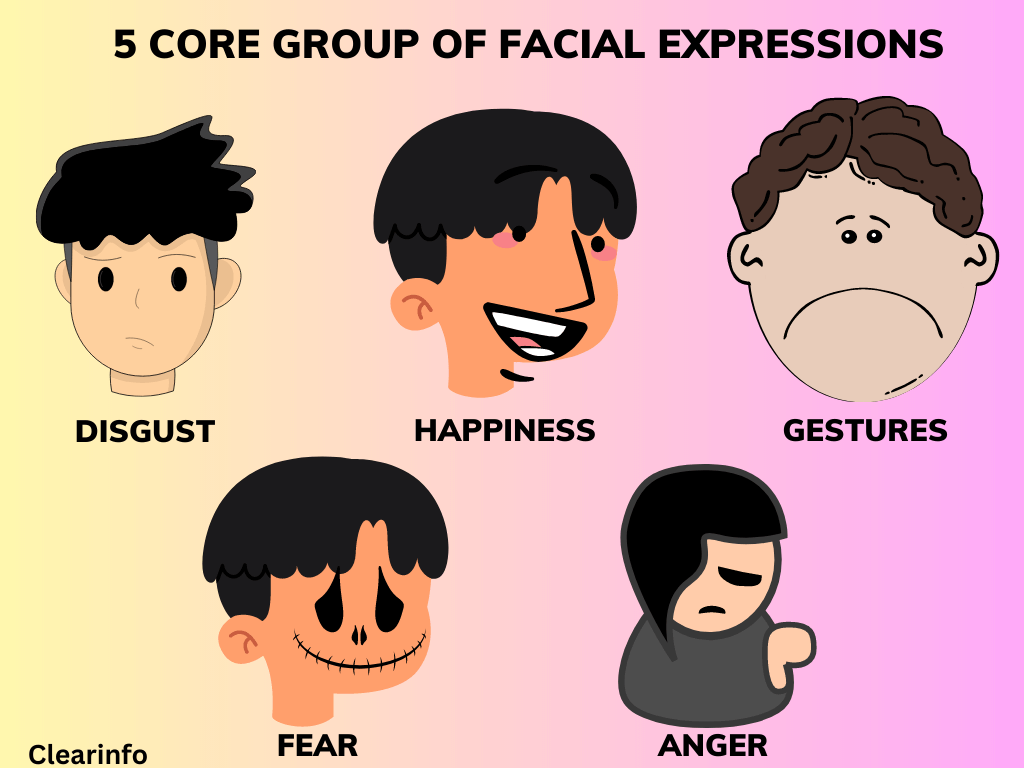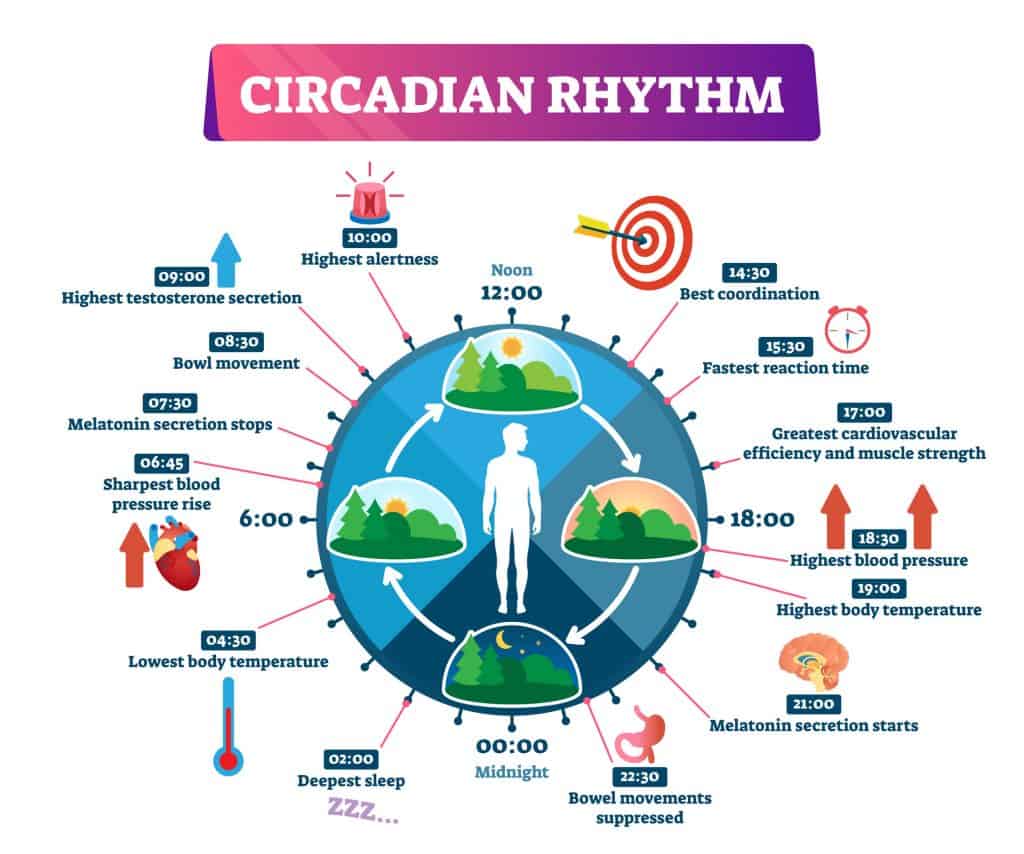Verbal communication alone can sometimes fall short of capturing the depth of our thoughts and emotions. This limitation can hamper effective communication and slow down the accurate conveyance of emotions and intentions.
However, by recognizing the significance of nonverbal cues, we enhance our verbal interactions, enabling us to convey our message, establish relationships, and foster deeper connections.
In this article, we will understand the eight key types of non-verbal communication with examples and explore the strategies for effectively encoding and decoding nonverbal messages.
Overview of non-verbal communication
Nonverbal communication involves the exchange of information, emotions, and message through nonverbal cues. It involves a wide range of behaviors, expressions, and signals that are expressed through various channels, including eye contact, touch, posture, voice tone, proxemics (use of personal space), appearance, and even silence.
The elements of nonverbal communication are essential components of human interaction, playing a significant role in conveying messages, establishing connections, and interpreting meaning.
Significance of understanding nonverbal cues
Effective communication involves more than just words. Nonverbal cues play a crucial role in our everyday interactions, conveying messages beyond what is explicitly spoken. Understanding and interpreting these cues is essential for successful communication, and navigating social interactions.
- Accurate Interpretation: Nonverbal cues help in interpreting the true meaning of a message. They provide insights into a person’s thoughts, feelings, and attitudes, allowing us to better understand their perspective.
- Building Relationships: Nonverbal communication is vital for building and maintaining relationships. Nonverbal cues, such as eye contact, smiling, and touch, contribute to establishing trust, and connection between individuals.
- Detecting Deception: Nonverbal cues can provide valuable insights into truthfulness or deception. Microexpressions, body movements, vocal changes, and other nonverbal indicators can uncover inconsistencies between verbal messages and true emotions or intentions.
8 types of nonverbal communication
Effective communication involves more than just words. Nonverbal cues play a crucial role in conveying messages and establishing connections. These nonverbal signals, expressed through various channels, can significantly impact how our messages are understood and received. Understanding these forms of nonverbal communication can enhance our ability to connect with others on a deeper level.
Let’s explore the eight types of nonverbal communication that shape our interactions and relationships.
1/ Kinesics
Kinesics is a branch of nonverbal communication that focuses on the study of body movements, gestures, and facial expressions. It explores how our physical actions and movements convey messages, emotions, and attitudes. Kinesics recognizes that our bodies are constantly communicating, even when we are not consciously aware of it. Body language, such as posture, hand gestures, and facial expressions, plays a crucial role in conveying meaning and enhancing or contradicting verbal communication.
Kinesics can be further classified into Gesture, Hand movement & posture, Eye contact, and Facial expression.
(A) Gestures
Gestures are non-verbal forms of communication that utilize physical expressions to convey meaning, emotions, and intentions. One influential classification system for body movements was developed by Paul Ekman and Wallace Friesen.
Their system categorizes gestures into five primary types:
1/ Adaptors: Adaptors are a type of nonverbal gesture that individuals use to satisfy personal needs, manage emotions, or cope with stress. These gestures are often subconscious and can serve as self-regulating behaviors.
Examples of adaptors include actions like playing with hair, biting nails, tapping fingers, or fidgeting with objects.
Adaptors often occur when a person is feeling anxious, nervous, or uncomfortable and can be helpful in releasing tension. However, it’s essential to be mindful of adaptors as they can also convey negative impressions or distract from effective communication.
2/ Emblems: Emblems are gestures that have a specific and widely understood meaning within a particular culture or group. They can be seen as substitutes for verbal communication and are often used intentionally to convey a specific message.
For example, The act of nodding one’s head up and down is widely understood as a gesture of agreement. Other emblems include the “OK” hand gesture, the victory sign, or the “shh” finger to the lips for silence.
3/ Illustrators: Illustrators are gestures that accompany and enhance verbal communication, helping to emphasize or clarify the spoken message. These gestures are closely linked to speech and are used to illustrate the size, shape, direction, or relationships between objects or ideas.
For instance, when describing something as “big,” a person may spread their arms wide apart to illustrate the size.
4/ Affect Displays: Affect displays are gestures that express emotions or feelings. They are often involuntary and can include facial expressions, body postures, or hand movements that convey happiness, sadness, surprise, or other emotional states.
5/ Regulators: Regulators are gestures that regulate or control the flow of conversation. These non-verbal signals help in turn-taking, maintaining or changing the speaker, or indicating a desire to speak or listen.
(B) Head movements and posture
Head movements and posture are integral components of kinesics. They play a significant role in conveying attitudes, emotions, and intentions.
4 Common human postures include:
1/ Standing: Standing posture involves an upright position with the body weight evenly distributed between the feet. It is a common posture in various social and professional settings. A confident and attentive standing posture typically includes an aligned spine, relaxed shoulders, and a balanced distribution of weight on both legs.
2/ Sitting: Sitting posture refers to the body’s position while seated. A good sitting posture entails a straight back, relaxed shoulders, and feet flat on the floor or supported by a footrest. Maintaining proper sitting posture is essential for avoiding back and neck strain.
3/ Squatting: Squatting involves resting on the heels or balls of the feet with the hips flexed and the knees bent. It is a common posture in many cultures for activities such as resting, working, or using the restroom. Squatting requires balance and flexibility, with the spine often slightly curved forward.
4/ Lying down: Lying down posture involves resting the body horizontally on a surface, such as a bed or a floor. The specific lying down posture can vary, such as lying on the back (supine), on the stomach (prone), or on the side (lateral). Each position has its implications for comfort, health, and sleep quality.
(C) Eye contact
Eye contact is a vital aspect of nonverbal communication, studied under oculesics. Our eyes and face are key focal points in communication, capturing most of the information around us. It helps signal readiness to speak or cues others to speak. During conversations, eye contact shifts between the speaker and listener.
It allows us to gather feedback, adapt messages, and assess engagement. Eye contact communicates interest, attention, and active listening. It can also intimidate or indicate different intentions, depending on social norms and context.
Functions of eye contact
Eye contact serves several specific functions in communication:
1/ Regulate Interaction and Provide Turn-Taking Signals: Eye contact is a means of indicating our readiness to communicate or signaling others to engage in conversation.
2/ Monitor Communication by Receiving Nonverbal Communication: Eye contact allows us to observe and interpret nonverbal cues from others. We can gather valuable feedback and information about their reactions, engagement, and emotions through their eye behaviors.
3/ Signal Cognitive Activity: When we are deeply lost in thought or absorbed in processing information, it is natural for our eyes to shift away from others. This eye behavior indicates that our attention is focused internally, signaling cognitive activity.
4/ Express Engagement: Making eye contact with others demonstrates that we are actively engaged in the conversation.
5/ Establish Rapport or Connection: Eye contact plays a crucial role in establishing rapport and connection with others.
(D) Facial expressions
Facial expressions are highly expressive and serve as powerful tools in nonverbal communication. They can convey emotions, intentions, and social cues. While facial expressions are often associated with internal emotional states, they can also serve social purposes.
For example, many of the smiles we produce are intended for others and may not necessarily reflect our internal emotional state. Genuine smiles, characterized by the activation of muscles around the eyes, are perceived as more authentic than fake or polite smiles.
Extensive research has supported the existence of a core group of facial expressions that are universally recognized across cultures. These include:

- Happiness
- Sadness
- Fear
- Anger
- Disgust
While these expressions are innate and widely understood, their triggers and cultural influences may vary.
2/ Haptics
Haptics is the study of communication through touch. Touch has a powerful impact on human interactions, as it can provide comfort, convey emotions, and establish connections that words alone cannot achieve. Understanding how to use touch appropriately is crucial for effective nonverbal communication.
A lack of competence in touch-related nonverbal communication can have negative consequences, affecting interpersonal judgments and credibility. Touch plays a vital role in human social development and can convey various messages, ranging from welcoming to threatening or persuasive.
Types of touch
Different types of touch serve specific purposes in interpersonal communication. Let’s explore the various types:
1/ Functional professional: This type of touch is associated with professional or task-oriented interactions. It serves a functional purpose, such as a doctor examining a patient or a massage therapist providing therapeutic touch. The touch is primarily intended to accomplish a specific task and is usually formal and impersonal.
2/ Social politic: Social-polite touch occurs in formal social settings and is driven by social norms and etiquette. It includes gestures like handshakes, a pat on the back, or a light touch on the arm during conversation. This type of touch shows respect and conveys friendliness.
3/ Friendship warmth: Friendship-warmth touch is characterized by a higher level of intimacy and is often seen between close friends or family members. It includes hugs, hand-holding, or an arm around the shoulder.
4/ Love-intimacy: Love-intimacy touch is the most intimate form of touch and is typically reserved for partners or individuals in deeply committed relationships.
Types of Hugs
1/ Criss Cross Hug: This type of hug is frequently observed among friends, where each person’s arm is positioned either below or above the other person’s arm.
2/ Neck-Waist Hug: In this particular hug, a strong connection is conveyed as one person gently holds the other by placing their arms around the neck, while the other person responds by wrapping their arms around the waist.
3/ Engulfing Hug: Similar to a bear hug, this hug occurs when one person completely wraps their arms around the other.
4/ Shake-First-Then-Tap Hug: This type of hug is commonly observed among men. It begins with a modified handshake where the hands are joined using the thumb and fingers, and the shaking happens between the chests of the people hugging. After the shake, one arm goes around the other person for a quick tap before stepping back and releasing the handshake.
3/ Vocalics
Vocalics, also known as paralanguage, is the study of the vocal qualities that accompany verbal messages. It includes elements such as pitch, volume, rate, vocal quality, and verbal fillers. The pitch of our voice plays a crucial role in communicating meaning, maintaining a smooth conversation, and signaling the level of intensity behind a message.
Volume communicates intensity, with a louder voice typically perceived as more intense. Speaking rate influences impressions of emotional state, credibility, and intelligence, with slightly faster rates often seen as more credible and intelligent. The tone of voice, influenced by pitch, volume, and emphasis, contributes to a person’s vocal signature and can affect how others perceive them.
Pleasing voices tend to exhibit vocal variety, lower pitch (especially for males) and lack regional accents. Verbal fillers like “um,” “uh,” and “like” are common in regular conversation and serve as pauses while thinking.
Functions of Vocalics
1/ Repetitions: Vocalics can be used for repetition, where certain words or sounds are repeated for emphasis or clarification.
2/ Completing: Vocalics can serve a completing function by filling in gaps or completing unfinished thoughts or sentences. For example, using vocal fillers like “uh” or “um” can indicate that the speaker is still processing information to express their thoughts.
3/ Accenting: Vocalics can emphasize certain words or parts of a message to highlight their significance. This can be achieved through variations in pitch, volume, or emphasis on specific syllables or words.
4/ Substitute: Vocalics can act as substitutes for verbal expressions. Sometimes nonverbal vocal cues, such as sighs, grunts, or gasps, can convey meaning or emotions without the need for specific verbal words.
5/ Regulations: Vocalics also play a regulatory function in communication. They help regulate the flow and pace of a conversation by signaling turn-taking, pauses, or interruptions.
6/ Contradicting: Vocalics can sometimes contradict the verbal message being conveyed. For instance, someone may say something positive but use a sarcastic tone, which creates a contradiction between verbal and vocal cues.
4/ Proxemics
Proxemics is the exploration of how physical space and distance impact communication. It explores the relationship between space, communication, and relationships. Metaphorically, we use space to describe our emotional closeness or distance from others. The concept of personal space is crucial in understanding how people communicate and behave.
To better understand the role of proxemics in nonverbal communication, it is crucial to explore the different distances of personal space. Edward Twitchell categorized Proxemics into four different zones, understanding these aspects helps us comprehend how spatial factors influence interpersonal interactions and social dynamics.
Proxemics distance

-Public space: Public space refers to the area that is 12 feet or more away from a person. It is the most distant zone and is typically used in formal settings or when a person wants to create a sense of power or maintain safety and security. Communication in the public space is formal and not intimate. It is difficult to have deep conversations in this zone due to the physical distance.
-Social space: Social space extends from 4 to 12 feet away from a person. It is a zone where professional or casual interactions occur. This distance is often preferred in professional settings to maintain a sense of professionalism and reduce any suspicion of impropriety.
In the social space, individuals are not obliged to interact with others, but they may acknowledge their presence. This zone allows for a safe distance where intentional or unintentional touching is unlikely.
-Personal space: The personal zone starts at the physical body and extends approximately 1.5 to 4 feet away. It is typical for friends, close acquaintances, and partners. This zone is where most of our daily communication occurs. Verbal communication is often used to indicate friendliness rather than intimacy.
The personal space is further divided into two subzones: the outer-personal zone (2.5 to 4 feet) and the inner-personal zone (1.5 to 2.5 feet). The outer-personal zone allows for relatively private conversations between people who are not necessarily close, while the inner-personal zone is for communication with those we are interpersonally close to or trying to establish a closer relationship with.
In this zone, light social touching, such as a brief touch on the arm, can facilitate conversation and a sense of closeness.
-Intimate space: The intimate zone is the closest proximity and is reserved for the closest friends, family, and romantic or intimate partners. It begins within 1.5 feet of a person’s body.
Breaching this space can evoke different emotional responses, as it involves a high level of physical and emotional closeness. Physical contact and touch play a significant role in this zone, providing comfort and a sense of connection.
5/ Chronomics
Chronemics is a type of nonverbal communication that focuses on the use of time in communication. It involves understanding how people perceive, structure, and use time during interactions. There are several key aspects of Chronemics that contribute to its significance in communication.
Firstly, time perception varies across cultures and individuals. Certain cultures place importance on being punctual and perceive time as a limited resource, whereas others adopt a more relaxed approach. These perceptions shape people’s behavior and expectations during communication.
Secondly, wait time or the amount of time individuals are willing to wait for a response or feedback, varies across cultures. Understanding and adapting to these differences is important for effective cross-cultural communication.
Effective time management is another aspect of Chronemics. How individuals organize and allocate their time influences communication effectiveness and productivity. Prioritizing tasks, setting deadlines, and managing time efficiently contribute to successful communication outcomes.
Furthermore, time can be classified into several categories within the realm of chronemics. These classifications include biological, personal, physical, and cultural time.
Classification of time
Understanding these classifications of time within the framework of chronemics helps us comprehend how time influences communication patterns and behaviors.
1/ Biological: Biological time refers to the inherent rhythms and cycles of living organisms. Humans follow a circadian rhythm, which influences our daily activities such as eating, sleeping, and waking. Disruptions to our biological time, such as staying up all night or experiencing jet lag, can negatively affect our physical and mental well-being as well as our communication competence.

2/ Personal: Personal time refers to an individual’s own preferences, priorities, and management of time. It includes factors such as personal schedules, time perception, and time preferences. Personal time management can vary widely between individuals and can be influenced by personality traits and individual goals.
3/ Social Time: Social time refers to the shared understanding and expectations of time within a social or cultural group. It involves the norms, rules, and conventions related to time management, punctuality, and scheduling. Social time can differ across cultures, with some cultures valuing strict adherence to schedules and punctuality, while others may have more relaxed attitudes toward time.
4/ Culture time: Cultural time refers to how a large group of people perceives and assigns value to time. There are two primary orientations: polychronic and monochronic. Polychronic individuals view time as flexible and engage in multiple activities simultaneously, while monochronic individuals have a more rigid, linear view of time and tend to focus on one activity at a time.
6/ Artifacts
Artifacts in the context of non-verbal communication refer to the physical objects or items that individuals use or display to convey messages about their identity, beliefs, values, and affiliations. These can include clothing, accessories, jewelry, hairstyles, and even technology devices. Artifacts serve as visual cues that provide insights into a person’s personality, cultural background, and social status.
Artifacts include a wide range of items that individuals intentionally or unconsciously select to express themselves. Examples of artifacts include clothing choices (e.g., formal attire, casual wear, cultural garments), accessories like watches, handbags, or eyeglasses, jewelry (e.g., rings, necklaces), and personal belongings that people carry or display (e.g., smartphones, laptops, notebooks).
Artifacts play a crucial role in reflecting and expressing an individual’s personal identity, cultural background, and social status. Clothing choices, for instance, can indicate someone’s profession, hobbies, or lifestyle preferences. Cultural garments and accessories can signify a person’s ethnic or religious affiliation. Similarly, expensive or luxury items may convey wealth or social status.
Cultural Variations and Interpretations of Artifacts:
Artifacts can have varying meanings and interpretations across cultures. What may be acceptable or meaningful in one culture can hold different values or associations in another. Colors, symbols, and clothing styles can have specific cultural significance. Understanding these cultural variations is crucial for effective cross-cultural communication and avoiding misunderstandings.
Impact of Artifacts on interpersonal communication and social perception:
Artifacts have a significant impact on interpersonal communication and social perception. They influence the initial impressions we form about others and shape our expectations and assumptions.
For example, someone dressed in formal attire may be perceived as more authoritative or professional, while someone wearing casual clothing might be seen as more approachable or laid-back. Artifacts can also serve as conversation starters or common ground for building rapport.
7/ Physical Appearance
Physical appearance refers to the observable characteristics of an individual’s body, including features like height, weight, facial expressions, body language, grooming, and overall attractiveness. It plays a significant role in non-verbal communication as it conveys information about a person’s emotions, personality traits, and cultural norms.
Additionally, physical appearance can provide cues about an individual’s overall health and grooming. Factors like posture, energy levels, skin tone, and physical fitness can indicate well-being or potential health concerns. Non-verbal cues related to physical health and grooming can influence interpersonal interactions and judgments made by others.
For example, the way individuals maintain their physical appearance through cleanliness, grooming practices, and appropriate attire can signal self-care, professionalism, and respect for oneself and others. It can also reflect cultural norms and expectations.
Perceptions of attractiveness and its impact on communication:
Physical attractiveness can influence how individuals are perceived and treated in various social contexts. Research suggests that attractive individuals may receive preferential treatment, including more attention, positive evaluations, and opportunities. These perceptions of attractiveness can affect communication dynamics, interpersonal relationships, and even professional outcomes.
8/ Silence
Silence, often considered the absence of speech, is a powerful form of non-verbal communication. While verbal communication is explicit and direct, silence can provide additional layers of meaning and can be equally impactful in conveying messages.
Silence can serve several purposes in communication. It can be used to emphasize a point, allow for reflection, or create anticipation. It can also signal agreement, disagreement, discomfort, or confusion. By intentionally remaining silent, individuals can communicate their thoughts, emotions, and intentions without speaking a word.
Moreover, silence can be a powerful tool for listening. By staying silent, individuals can actively listen and provide the speaker with the necessary space to express themselves fully. Silence in this context demonstrates respect, attentiveness, and a willingness to understand the speaker’s perspective.
It is important to note that the interpretation of silence may vary across cultures and contexts. In some cultures, silence may be considered respectful or indicative of deep thought, while in others, it may be seen as uncomfortable or an indication of disagreement. Understanding cultural nuances and the specific context is crucial to accurately interpreting the role of silence in communication.
Silence as a Form of Nonverbal Response
Silence can be a powerful nonverbal response in communication. Instead of using words, individuals may choose to remain silent to convey their thoughts, emotions, or intentions. Here are a few aspects to consider when examining silence as a form of nonverbal response:
- Communicating Emotions: Silence can be used to express a range of emotions, such as anger, sadness, contemplation, or surprise. For example, a person may remain silent when they are upset or trying to gather their thoughts before responding.
- Pausing for Thought: Silence can be used to pause and gather one’s thoughts before providing a response. It allows individuals to process information, consider their words carefully, or reflect on the conversation’s content.
- Nonverbal Agreement or Disagreement: Silence can indicate agreement or disagreement with a statement or proposition. For instance, someone may remain silent when they do not want to voice their disagreement explicitly or when they are uncertain about their stance.
- Active Listening: Silence can also serve as a nonverbal signal of active listening. When individuals remain silent, maintain eye contact, and provide nonverbal cues such as nodding, they show their engagement and attentiveness to the speaker. The interpretation of silence as a nonverbal response heavily relies on the duration and context in which it occurs. A brief silence may indicate attentiveness or thoughtfulness, while a prolonged silence might signal discomfort, disagreement, or a desire for further discussion.
Examples of verbal and nonverbal communication
Examples of verbal communication
- Talking on the phone
- Giving presentations
- A team brainstorming session
- Negotiation between two business partners
Examples of nonverbal communication
- Eye gaze
- Facial expression
- Gesture
- Posture
- Physical touch
Nonverbal Communication Competences
Nonverbal Communication Competence refers to the ability to effectively understand, interpret, and use nonverbal cues in communication. It involves the skill of accurately perceiving and decoding nonverbal signals sent by others, as well as the ability to appropriately encode and use nonverbal cues to convey meaning.
A person who possesses nonverbal communication competence is skilled in recognizing and interpreting various nonverbal cues such as facial expressions, body language, gestures, tone of voice, eye contact, and proxemics (use of personal space). They are aware of the different meanings these cues can convey in different contexts and cultures.
Strategies for effectively encoding and decoding nonverbal messages
1/ Increase awareness and Observation: Develop a heightened awareness of nonverbal cues by paying attention to your own and others’ nonverbal behavior. Observe facial expressions, body language, gestures, vocal tone, and other nonverbal signals in different contexts.
2/ Contextual Understanding: Consider the context in which the nonverbal cues are occurring. Different situations and cultural backgrounds may influence the meaning and interpretation of nonverbal messages. Take into account the environment, relationship dynamics, and cultural norms.
3/ Active Listening: Practice active listening skills to fully understand the nonverbal cues being expressed by others. Give your complete focus, make eye contact, and demonstrate sincere interest.
4/ Self-Awareness and Regulation: Take time to reflect on your own nonverbal cues and consider how they might be interpreted by others. Be aware of any unintentional signals you may be sending and regulate your nonverbal behavior to align with your intended message.
5/ Avoid assumptions: Refrain from making hasty judgments or assumptions based solely on nonverbal cues. Nonverbal communication is complex and can be influenced by various factors, so it is important to gather additional information and consider multiple cues before drawing conclusions.
6/ Practice and Feedback: Regularly engage in practicing your nonverbal communication skills and actively seek input and feedback from others. This helps in refining your ability to encode and decode nonverbal messages effectively.
How to Increase Competence in Channels of Nonverbal Communication
(A) Kinesics:
Gestures:
- Utilize illustrators to make your verbal communication more engaging. Even in situations where gestures are not visible, using them can enhance the tone and engagement of your voice.
- Understand that gestures can convey emotional states. Pay attention to your own gestures and ensure they align with the intended message. For example, avoiding closed fists which may signal aggression, or nail biting may indicate nervousness.
Eye Contact:
- Use eye contact to initiate and regulate conversations. Before speaking to someone, establish eye contact to ensure they are available for interaction and to avoid being perceived as rude.
- Avoid excessive eye contact or constantly shifting your gaze, as it can be interpreted as deception or inattentiveness.
(B) Haptics (Touch)
- Recognize that touch messages are influenced by culture, status, gender, age, and setting.
- In both professional and social contexts, it is generally considered acceptable to make physical contact by touching someone’s arm or shoulder. However, touching someone’s hand with your hand may be too intimate for professional or casual interactions.
- Avoid touching strangers unless it is during introductions or when offering assistance.
(C) Vocalics (Paralanguage):
- Reduce the use of verbal fillers, such as “um” or “like,” especially in formal situations, as they can affect your credibility and message clarity.
- Vary your vocal expression, including rate, pitch, and volume, to increase listener and speaker engagement, understanding, and motivation. A more expressive voice can help you achieve your communication goals effectively.
(D) Proxemics:
- Adapt your nonverbal signals concerning interpersonal distances in response to instances where personal space boundaries are crossed. Lower your level of immediacy, change your body orientation, or use objects to create separation.
- Be mindful of social norms and avoid making eye contact or getting too close to someone’s personal space in situations that deviate from the expected norms, such as witnessing someone fall or when others express negative emotions.
(E) Chronemics (Time):
- Understand the importance of turn-taking in conversations. Taking a little longer with your turn can enhance your credibility, but avoid talking excessively or too little.
- Be mindful of your punctuality as it reflects your professionalism and dependability. Differentiate between formal time, where being on time or a few minutes early is expected, and informal time, which allows more flexibility in terms of promptness.
(F) Artifacts:
- Pay attention to the Artifacts you choose to wear or display, such as clothing, accessories, or objects, as they communicate aspects of your identity, culture, and social status.
- Use artifacts strategically to enhance your professional image or create a desired impression in social settings.
(G) Physical Appearance:
- Maintain personal grooming and hygiene to present yourself professionally and create a positive impression.
- Consider the role of body language in conjunction with physical appearance. Be mindful of your posture, facial expressions, and overall manner to ensure consistency in your nonverbal communication.
(H) Silence:
- Understand the role of silence as a type of nonverbal communication. Recognize that silence can serve as a response or reaction in conversations.
- Use silence strategically to convey meaning or create emphasis in your communication. Silence can enhance the impact of your verbal messages when used intentionally.
Frequently Asked Questions
Q1) What are the 4 main types of nonverbal communication?
Ans: The four main types of nonverbal communication are kinesics (body movements and gestures), proxemics (use of personal space), paralanguage (vocal cues such as tone and pitch), and artifacts (objects and symbols that convey meaning).
Q2) What are the 8 types of nonverbal communication?
Ans: The eight types of nonverbal communication include kinesics, haptics, vocalis, proxemics, artifacts, silence, and chronemics. Understanding these nonverbal cues is vital for facilitating effective communication.
Q3) What are the 7 nonverbal communication signals?
Ans: The seven primary signals of nonverbal communication include facial expressions, body movements, gestures, eye contact, posture, tone of voice, personal space, and physical touch. These signals work together to convey messages and allow for a deeper understanding of communication beyond words alone.
Q5) What are the 5 categories of non-verbal communication?
Ans: The five categories of nonverbal communication are kinesics (body movements and gestures), proxemics (personal space and distance), haptics (touch and physical contact), paralanguage (vocal cues and tone of voice), and chronemics (the use of time). Each category plays a distinct role in conveying messages and enhancing interpersonal communication.



